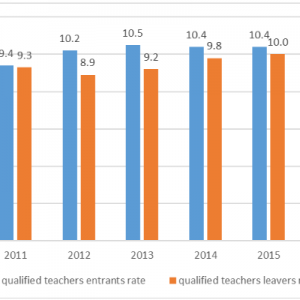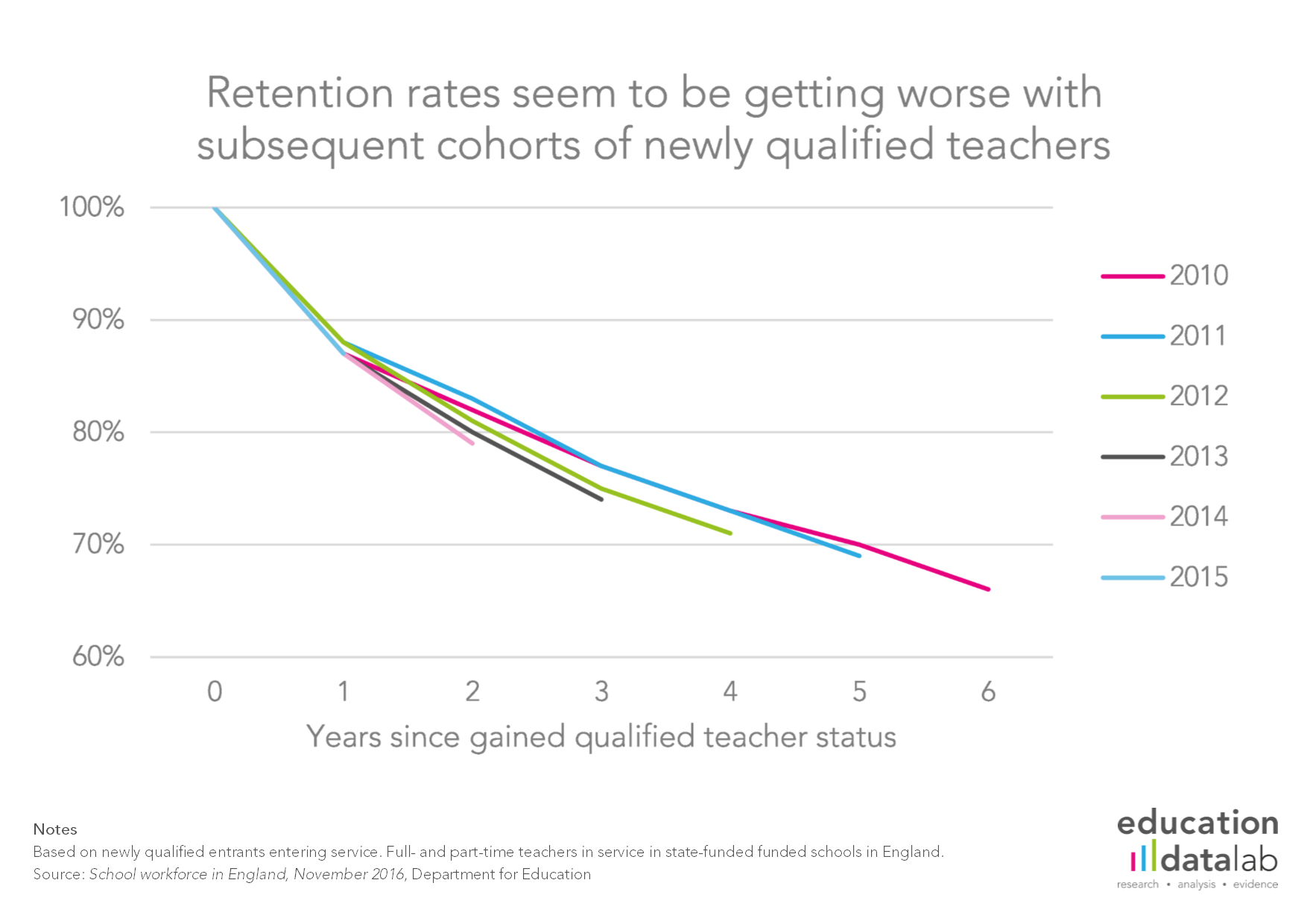With a workload problem that has been identified but not addressed, and funding pressures that are biting, are the effects starting to show in teacher workforce figures?
On the face of it, this isn’t the case.
Figures published this morning show that overall teacher numbers are up marginally, from 456,900 full-time equivalents (FTEs) in 2015 to 457,300 in 2016. Teaching assistant numbers are also up, from 263,000 to 265,600, despite them being in what often seems a more vulnerable position than teachers themselves are.
But we don’t have to dig much deeper to see evidence that all is not well…
Number of secondary teachers falls despite bulge in pupils
The number of teachers and teaching assistants in primary schools is up – but there is a population bulge still working its way through primary schools, so this is unsurprising.
Some of the change has also come through a reduction in the size of leadership teams
Things are different at secondary level. Here teacher numbers are down for the fourth year in a row (208,200 in 2016, down from 210,900 the year before), and teaching assistant numbers down for the third year (50,100 in 2016, down from 52,300 the year before).
And this, despite secondary school populations now being on the up, as the population bulge that has been working its way through primary schools starts to reach secondary age.
This has the effect of increasing secondary pupil-teacher ratios – up from 15.3 pupils per teacher in 2015 to 15.6 in 2016.
From what the profession are saying, it seems likely that much of this increase in ratio is coming as schools start to cut Key Stage 4 classes in subjects only taken by small numbers of pupils. Goodbye design and technology GCSE, perhaps.

Some of the change has also come through a reduction in the size of leadership teams – the overall reduction in secondary teacher numbers from 210,900 in 2015 to 208,200 in 2016 includes the loss of 200 deputy heads and 200 assistant heads.
Interestingly, primary pupil-teacher ratios have not changed so much. At 20.5 in maintained primaries, and 20.9 in primary academies, these figures are not much different from those seen a year ago (20.4 and 20.9 respectively).
There is clearly less scope for a primary school experiencing severe financial pressure to cut classes than is the case for a secondary school.
But with around 75% of school expenditure typically going on staff costs, it is somewhat surprising not to see things going in the same direction at primary schools as at secondaries.
Falling retention rates costing government millions a year
There is further evidence of a growing retention crisis. Among the data released today is a table showing the number of newly qualified teachers still teaching in state-funded schools at the one-year mark, the two- and three-year mark, and so on.
The government likes to quote the one-year retention figure, which currently stands at 87%, and is broadly unchanged going back five years or more.
But looking at the three-year figure, for example, only 74% of the cohort who qualified in 2013 were still teaching last November (see image below).

Looking at the cohort who qualified in 2010, the equivalent three-year retention figure was 77%, and we get a similar picture of generally declining retention if we look at other cohorts and other retention periods.
On the face of it, that a change from 77% to 74% might sound a fairly small change.
If we’re talking about roughly 24,000 qualified teachers, then it’s approximately 720 extra teachers who are not in the classroom each year.
And at a cost of around £23,000 to train a teacher, a 3 percentage point decline like this costs something like an extra £17m per year, in terms of the additional teachers who would need to be trained to fill their places.
While there are some other factors that probably contribute to these declining retention – the growth of going to teach in Dubai as an option, for example – it is not a sign of health in a workforce.
Even if the government cannot be persuaded to do more to improve workload, and lessen the demands being placed on teachers, as things worth pursuing for their own sakes, surely they can see that it makes financial sense.








Your thoughts